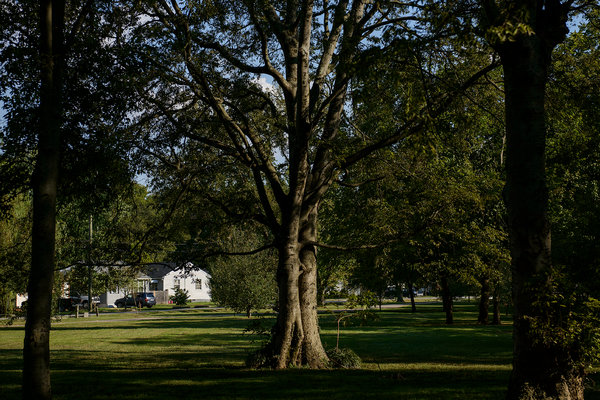Deborah Westbrook, a lifelong resident of Detroit, would love a tree in front of her home.
“With a green tree in front of my house,” she said, “and me looking at the green leaves, knowing that the tree and sun were mixing together to give off the oxygen we breathe? I would be proud. A tree in front of my house would not only help with the air, but it would help with me.”
Nonetheless, when representatives from a local nonprofit came to plant trees on her block five years ago, Ms. Westbrook said no. So did more than 1,800 Detroiters — a quarter of all eligible residents — between 2011 and 2014.
Why the high rejection rate? In a study published Monday in Society and Natural Resources, researchers found that the opposition does not arise from a dislike of trees per se. Most residents, the study found, appreciate the benefits of trees; these include alleviating air pollution, storm-water runoff and higher urban temperatures, and helping to reduce stress, crime and noise. Low-income and minority residents often live in areas with the lowest tree cover.
The researchers, led by Christine Carmichael, a postdoctoral associate at the University of Vermont, conducted interviews with more than 40 Detroit residents. The biggest predictor of whether someone declined a tree, it turned out, was whether that person had negative experiences with trees — or with city workers or outsiders who, as one respondent said, “come in and try to ‘do good,’ but only half do the job.”
[Like the Science Times page on Facebook. | Sign up for the Science Times newsletter.]
From the end of the 19th century until the 1950s, Detroit was known as “the city of trees,” with more per capita than any industrialized city in the world. But by 1980, more than half a million trees had died. Of the 20,000 trees marked dead or hazardous in 2014, when Dr. Carmichael’s study began, the city had removed only 2,000 or so.
Ms. Westbrook noted that the city hasn’t addressed several dead trees on her block. She was worried that a dead giant next door would damage her roof, leaving her to pay for repairs. Now retired, Ms. Westbrook worked for Detroit’s water department, where she saw enough tree roots growing into pipes that she didn’t want to plant a tree of her own until she replaced her old pipes with root-resistant PVC ones.
Other cities have encountered similar resistance to their tree-planting efforts. “Some poor decisions were made around trees that were planted 50 years ago,” said Kathryn Ott Lovell, Philadelphia’s parks and recreation commissioner. The city’s TreePhilly program, which helps residents plant and care for trees, offers up to a dozen types of trees as options and explains which trees are safe to plant around pipes, sidewalks and wires.
Dr. Carmichael has offered recommendations based on her research. Residents should be involved in at least choosing the type of tree they receive. Agencies should shift their metrics of success to include not just the number of trees planted, but also how engaged residents are in the process. Based on those suggestions, The Greening of Detroit, the nonprofit group that came to Ms. Westbrook’s neighborhood, expanded its youth employment program, which trains and gives stipends to local high school students to maintain and teach residents about trees.
Although Ms. Westbrook turned down a tree, her block is fairly lush. Neighbors collectively maintain bushes and flower beds on the block’s corners, and they’ve taken up the task of watering trees. The trees planted in 2014 by the Greening of Detroit “are well-rooted and they are growing,” said Mellow Jean Dixon, Ms. Westbrook’s neighbor, who has one next to her house.
She added, “I think, if need be, we would get together and take care of any tree we saw that needed taking care of.”
Most of the blocks’ residents have lived in their homes for a long time, and they take pride in being one of the prettier blocks around. Ms. Westbrook noted that some nearby blocks have no trees at all. “It’s like the earth is missing something,” she said.




